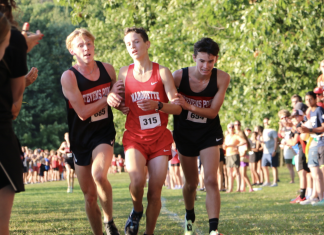A new report from the Organization for Economic Cooperation and Development (OECD) shows that while schools have done a good job of certifying equity in terms of the quantity of mathematics education students receive, disadvantaged students have access to a much lower quality of math education, since their teachers tend to emphasize simple applied math skills, not pure mathematics to which their more affluent peers have access.
 As is common on data tied to internationally benchmarked tests, the US performs near the bottom in math. Also, the data show that the average score for 15-year-old Americans on the space and shape content area—mostly geometry—is below their score on the overall test, but US students’ scores on the change and relationships content area—which measures students’ ability to use algebraic models to solve real-world problems—is higher than their overall math score.
As is common on data tied to internationally benchmarked tests, the US performs near the bottom in math. Also, the data show that the average score for 15-year-old Americans on the space and shape content area—mostly geometry—is below their score on the overall test, but US students’ scores on the change and relationships content area—which measures students’ ability to use algebraic models to solve real-world problems—is higher than their overall math score.
The data reveal a tendency on the part of US schools to emphasize applied math (modeling) more than pure math (geometry).
The report, entitled “Equations and Inequalities: Making Mathematics Accessible to All,” was released by OECD on June 20, and Andreas Schleicher, director of education and skills for the forum, conducted a webinar for reporters. OECD is made up of 34 democracies with market economies across the world and includes 70 non-member economies, all working together to promote economic growth, prosperity, and sustainable development.
Students who really understand the foundations can extrapolate, Mr Schleicher said. Those students are usually more successful in applying that “pure” mathematical knowledge to solve problems in other contexts, but if students just learn a few tricks about solving little everyday problems, they may be able to solve those problems, but they don’t develop the ability to transfer that knowledge to a new context.
In a webinar accompanying the report’s release, he stressed that it shouldn’t be construed as a way of condemning the teaching of skills in applied math by using real-world applications, as so many teachers in this country do. Kids in South Korea also get a lot of instruction in applied math, and they get great scores in math. That’s not the issue.
Rather, he said the new data underscore the bigger problem of equity in educational opportunity. Mathematics education is playing the role of reinforcing inequity, of widening achievement gaps between rich and poor students, because teachers in poorer schools spend more time on applied math than on pure mathematics while teachers in schools in more affluent places spend more time on pure mathematics, compared to their poorer counterparts.
The report recommends that policymakers develop more ambitious standards in pure mathematics in order to give students everywhere access to a higher quality of math instruction, not just access to the same quantity of math instruction. Students need access to an education that includes pure mathematics as well as the applied math skills many poorer school districts emphasize, according to the new report.
“Teachers can help students acquire higher-order mathematical knowledge and skills by replacing routine tasks with challenging open[-ended] problems,” the report states.














